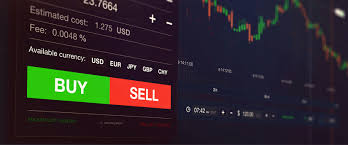
How to Open a Forex Trading Account: A Complete Guide
Forex trading has gained immense popularity in recent years, with countless traders around the globe seeking to capitalize on the currency market. If you’re considering joining their ranks, the first step involves opening a Forex trading account. This guide will take you through the essential steps and considerations involved in setting up your account and starting your trading journey. For a comprehensive list of brokers to consider, check out open forex trading account Trading Brokers in Pakistan.
Understanding Forex Trading
Forex, or foreign exchange, is the largest financial market in the world, with a daily trading volume exceeding $6 trillion. In Forex trading, currencies are exchanged in pairs (for example, EUR/USD) with the aim of profiting from fluctuations in exchange rates. Unlike other financial markets, Forex operates 24 hours a day, five days a week, providing ample opportunities for traders to engage in active trading.
Types of Forex Accounts
Before diving into the account opening process, it’s essential to understand the different types of Forex trading accounts available:
- Standard Account: This is the most common type of account, allowing for larger trades and margin requirements.
- Mini Account: Designed for new traders, this account type allows for smaller trades and lower capital investment.
- Micro Account: This is ideal for beginners who want to trade with minimal risk, typically with very low minimum deposits.
- ECN Account: Best suited for seasoned traders, ECN accounts provide access to raw spreads and lower transaction costs.
Steps to Open a Forex Trading Account

Step 1: Choose a Reliable Broker
Choosing the right broker is crucial to your trading success. Look for a broker with a good reputation, competitive spreads, and a user-friendly trading platform. Additionally, ensure that they are appropriately regulated by a financial authority to safeguard your funds.
Step 2: Complete the Application Form
Once you have selected a broker, visit their website and fill out the account application form. This form typically requires you to provide personal information such as your name, address, email, and phone number. You may also need to answer questions about your trading experience and financial status.
Step 3: Provide Identification Documents
To comply with regulatory requirements and ensure security, brokers will ask you to submit identification documents. Common documents include a government-issued ID (passport or driver’s license) and proof of address (utility bill or bank statement). Ensure that your documents are clear and legible.
Step 4: Fund Your Account
After your application is approved, you’ll need to deposit funds into your account. Most brokers offer various funding methods, including bank transfers, credit/debit cards, and e-wallets. Be sure to check for any minimum deposit requirements and transaction fees that may apply.

Step 5: Download the Trading Platform
Most brokers offer trading platforms that can be downloaded to your computer or accessed via a web browser. Some may also provide mobile trading applications. Download the platform of your choice and familiarize yourself with its features.
Step 6: Start Trading
Once your account is funded and you have familiarized yourself with the trading platform, you are ready to start trading. It’s advisable to begin with a demo account to practice your trading strategies without risking real money.
Tips for Successful Forex Trading
Opening a Forex trading account is just the beginning. Here are some tips to help you succeed in Forex trading:
- Education: Invest time in learning about Forex trading, market analysis, and risk management. Consider courses or tutorials to build your knowledge base.
- Create a Trading Plan: Develop a clear plan outlining your trading goals, risk tolerance, and strategies. Stick to this plan to avoid emotional trading decisions.
- Practice with a Demo Account: Many brokers offer demo accounts where you can trade with virtual funds. Use this opportunity to practice your strategies and understand market dynamics.
- Manage Your Risk: Use tools like stop-loss orders to limit potential losses, and never risk more than you can afford to lose.
- Stay Informed: Keep abreast of global economic news and events that could impact currency prices. Use this information to make informed trading decisions.
Conclusion
Opening a Forex trading account is a straightforward process, but it’s crucial to choose a reliable broker and understand the trading landscape. By following the steps outlined in this guide, you can set up your account and embark on your Forex trading journey. Remember to educate yourself continuously and develop disciplined trading practices to enhance your chances of success. Happy trading!

